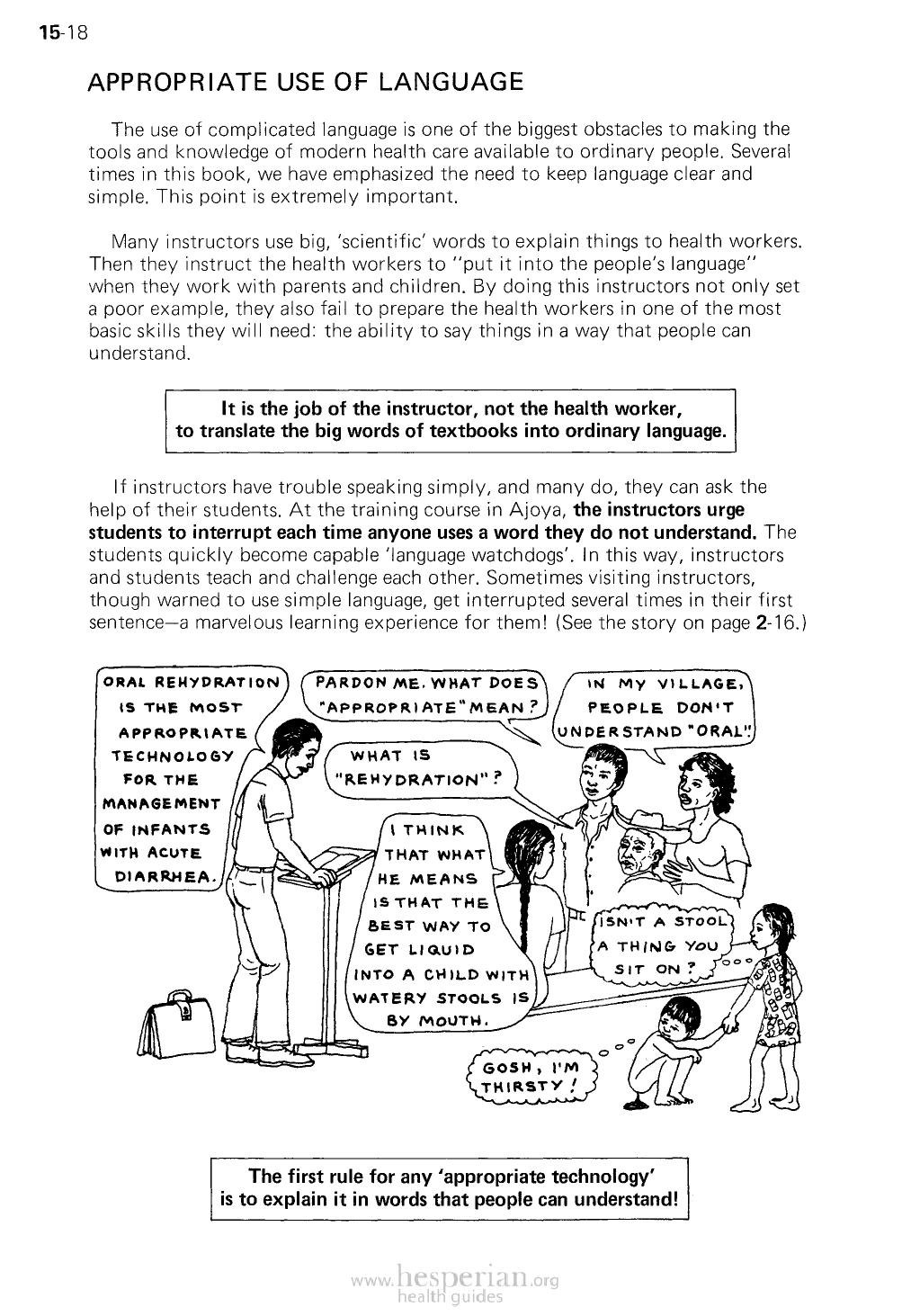
15-18
APPROPRIATE USE OF LANGUAGE
The use of complicated language is one of the biggest obstacles to making the
tools and knowledge of modern health care available to ordinary people. Several
times in this book, we have emphasized the need to keep language clear and
simple. This point is extremely important.
Many instructors use big, ‘scientific’ words to explain things to health workers.
Then they instruct the health workers to “put it into the people’s language”
when they work with parents and children. By doing this instructors not only
set a poor example, they also fail to prepare the health workers in one of the
most basic skills they will need: the ability to say things in a way that people can
understand.
It is the job of the instructor, not the health worker, to
translate the big words of textbooks into ordinary language.
If instructors have trouble speaking simply, and many do, they can ask the help
of their students. At the training course in Ajoya, the instructors urge students
to interrupt each time anyone uses a word they do not understand. The
students quickly become capable ‘language watchdogs’. In this way, instructors
and students teach and challenge each other. Sometimes visiting instructors,
Though warned to use simple language, get interrupted several times in their first
sentence—a marvelous learning experience for them! (See the story on page 2-16.)
The first rule for any ‘appropriate technology’ is to
explain it in words that people can understand!